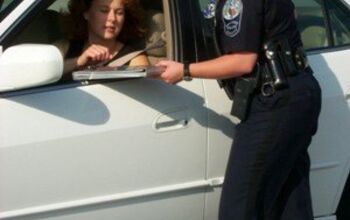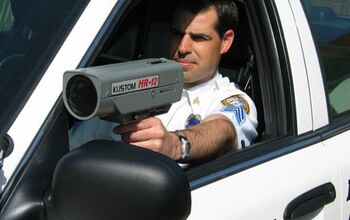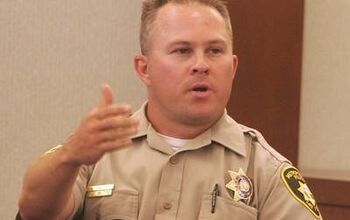The Insider's Guide to Speed Enforcement Pt. 2: Radar Detectors
On January 2, 1974, President Richard M. Nixon signed the Emergency Highway Energy Conservation Act. A provision of the Act imposed a new, national, 55 mph maximum speed limit. Overnight, the United States had a massive speeding “problem.” Within weeks, the feds gave huge amounts of money to police forces around the country to purchase radar guns. The speeding ticket, always a reliable cash cow for local governments, became a cash herd.
In response, the Fuzzbuster. The first commercial radar detector was a simple receiving unit. It picked up the high power continuous transmission of the early X-band police radar guns and sounded an alarm. Depending on the speed of the Fuzzbuster-equipped motorist, he or she had at least a half to a quarter mile before the signal was strong enough to bounce back to the police and provide a reading.
Escort tendered the next major advance. The old school black box Escort was a quantum leap in quality: the first superhetrodyne radar receiver commonly available. The Escort’s X-band detection distance was twice that of the Fuzzbuster. Equally important, the Escort also picked-up K-Band radar gun signals, emitted by the cutting edge revenue collection device of the early 80’s.
Once the police side switched to “instant on” radar guns, the game changed again. Detectors were no longer looking for a strong beam (think a set of xenon headlights shining down a dark highway). They were now trying to detect a child’s flashlight being turned on and off at random, during the day. Since a radar detector is essentially nothing more or less than a scanner, it has to cover the entire band over and over, looking for those wisps of radar.
To find those tiny wisps of K-band emissions, a device needs some serious microprocessing horsepower. That kind of microwave technology isn't cheap. Radar detector buyers looking for something more than a dashtop ornament that provides a false sense of security must now go to the top of a manufacturer’s line for electronic satisfaction.
Still, many folks held onto their Fuzzbusters, classic black box Escorts and later grey metal Passports. While they’re still great for detecting police radar guns operating on the X and K-band radar signal, they’re blind to the latest Ka-band police technology. I still see these on dashboards in New York Courts every week, in a state where 95 percent of the police radar systems run on the Ka-band.
I’m often asked “why can’t I just buy a radar jammer?” There are two stumbling blocks: money and the Federal Communications Commission (FCC).
Any item which transmits a radio signal falls under the FCC’s purview. To properly jam police radar unit, a jammer needs to receive a signal, “read it” and fire back a signal strong enough to overwhelm the radar gun– or vary the returning signal’s frequency slightly to confuse the police radar gun’s computer. The military has some fantastic devices for fighter planes that do all this, at military price points.
Even assuming you could create a usable civilian unit, the FCC would frown upon this endeavor in a most emphatic way. If they caught wind of even a single unit, they’d send you a “Notice of Liability” reminding you (with a huge fine) that you’re not allowed to jam any licensed service. (That's why Cell Phone jammers can't be sold in the US.) So back to detectors…
None of today’s radar detector can warn you of an “instant-on” police radar signal if you’re the first one through the trap. A detector is a radio receiver, no more, no less. Ka-band frequencies are tricky to detect. The frequencies used by many police radar guns for Ka-band are on the exact same frequency that some radar detectors transmit.
In traffic, surrounded by other cars, radar detectors are prone to a “Ka-false,” triggered by another radar detector. To keep users sane, detector makers will “notch out” that specific frequency– which is why police radar makers seek to transmit there. The expensive detectors have the computer power to figure out this riddle, which is why the $69 detector is more dangerous than nothing at all.
None of today’s most sophisticated radar detectors can detect all police radar guns all of the time in all situations, and do so with enough alacrity that the driver can check their speed before the police do. A safe driver will always drive only as fast as conditions allow, and use their cranium’s computing power (including memory) to avoid inadvertent speeding.
That said, a high-powered radar detector is a valuable tool for the serious driver with a lot of exposure time. It’s a little extra insurance, but, again, it’s not a free pass. Buy the best detector you can afford, but don’t change your driving style based on the box.
[Casey W. Raskob, Esq. is a NY-based lawyer who runs speedlaw.net]
More by Casey W. Raskob
Latest Car Reviews
Read moreLatest Product Reviews
Read moreRecent Comments
- Alan Where's Earnest? TX? NM? AR? Must be a new Tesla plant the Earnest plant.
- Alan Change will occur and a sloppy transition to a more environmentally friendly society will occur. There will be plenty of screaming and kicking in the process.I don't know why certain individuals keep on touting that what is put forward will occur. It's all talk and BS, but the transition will occur eventually.This conversation is no different to union demands, does the union always get what they want, or a portion of their demands? Green ideas will be put forward to discuss and debate and an outcome will be had.Hydrogen is the only logical form of renewable energy to power transport in the future. Why? Like oil the materials to manufacture batteries is limited.
- Alan As the established auto manufacturers become better at producing EVs I think Tesla will lay off more workers.In 2019 Tesla held 81% of the US EV market. 2023 it has dwindled to 54% of the US market. If this trend continues Tesla will definitely downsize more.There is one thing that the established auto manufacturers do better than Tesla. That is generate new models. Tesla seems unable to refresh its lineup quick enough against competition. Sort of like why did Sears go broke? Sears was the mail order king, one would think it would of been easier to transition to online sales. Sears couldn't adapt to on line shopping competitively, so Amazon killed it.
- Alan I wonder if China has Great Wall condos?
- Alan This is one Toyota that I thought was attractive and stylish since I was a teenager. I don't like how the muffler is positioned.


































Comments
Join the conversation
Laser is very hard to hit with a radar detector, if you are worried about laser try the laser pro park which will jam the laser signal, I own it myself pretty neat device but expensive, it will pay for itself eventually though.
I have ran a V1 in many states, awesome detector by the way, and have been able to get out of some tickets even still. The only situations they can get me in is if they have their radar turned down real low or off, and then turn it up when they see me coming. This is rare and 19 out of 20 times I have them a mile in advance. It has been my experience that it is always best to fight a ticket even if you were totally guilty. Pay the fine immediately same day. Even if you go into the court and ask for a plea bargain based on the fact that you will promise to slow down when going through that particular state or community and could they please accept the fine and forgive the points. In every moving violation I have ever had, this argument has worked to some degree. Go in dressed nice and be very mannerly, as in Good afternoon and yes sir or ma'am or your honor. Most judges are WAY WAY nicer than cops and certainly more understanding. Good luck. If you would like to ask me for advice you can email papagronk@yahoo.com. Happy trails.